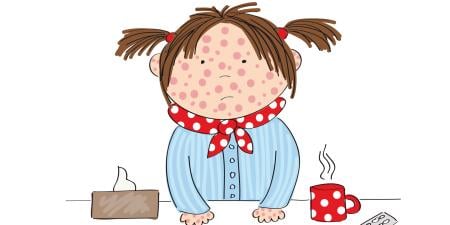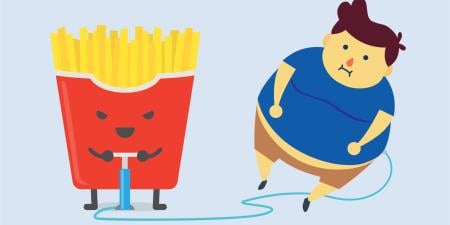As many as 5 percent of preadolescent boys, 8 percent of adolescent boys and a quarter to a half that percentage of girls of those same ages fulfill criteria for a diagnosis of conduct disorder [1]. In contrast to isolated behavior problems, this diagnosis requires a repeated, persistent pattern of violating the rights of others and age-appropriate societal rules for six months or more. Multiple factors are probably responsible for this developmental pathway [2]. The primary features of conduct disorder are:
- Aggression
- Vandalism
- Theft
- Frequent lying
- Violation of rules, running away
About 40 percent of children with the diagnosis of conduct disorder will grow into adults with antisocial personality disorder.
Diagnosis
Correct diagnosis rests upon distinguishing typical adolescent risk-taking and experimentation from enduring antisocial behaviors that repeatedly involve serious harm to individuals or property. Some questions that help in differential diagnosis of conduct disorder are [3]:
- Have you had any run-ins with the police? If yes, what were the circumstances?
- Have you been in physical fights? If yes, what were the circumstances? How many?
- Have you been suspended or expelled from school? If yes, how many times? What were the circumstances?
- Do you smoke, drink alcohol or use other drugs? If yes, how often? How long? Which drugs?
- Are you sexually active?
Comorbid disorders such as the following should be identified in making the diagnosis because their existence can influence presentation and treatment options:
- Attention deficit hyperactivity disorder (ADHD), which has features of disinhibition, inattention and distractability.
- Substance abuse or dependence; these show functional impairments and withdrawal or tolerance symptoms that need to be carefully elicited and managed. Early (at or before 13 years of age), repeated use is associated with overlapping conduct symptoms.
- Mood disorders, which have sleep, appetite, energy level or thought pattern changes. Watch for increased risk of suicide with impulsivity.
- Intermittent explosive disorder, which is characterized by sudden aggressive outbursts in isolation from all other persistent symptoms. It is unprovoked and without intent to harm anyone.
- Oppositional defiant disorder, closely related in the continuum of disruptive behavior disorders, but may be distinguished by less physical aggression and less likely history of problems with the law.
Treatment
Treatment options for conduct disorder are family therapy, behavioral modification and pharmacotherapy, often in combination. The clinician must assess the severity of the individual child’s disorder and should refer the child and family to a subspecialist if any of the following conditions apply: there are concerns about safety, diagnostic behaviors escalate rapidly, psychoeducational interventions are ineffective, there is conflicting information from multiple sources or many comorbid symptoms exist [4]. Substance abuse problems should be treated first with appropriate interventions and rehabilitation.
If the family is open to working with a therapist, the therapist should:
- Explain that long-term prognosis is poor without intervention.
- Emphasize that structure and parental monitoring of activities (e.g., where the child is and with whom) are critical to effective management. Preference should be given to supervised peer activities such as organized sports or clubs in the school or community.
- Discuss and practice ways to communicate clearly, illustrating statements that do and do not work.
- Stress the importance of positive attention. Show family members how to set up appropriate rewards for desirable behavior and how to establish a daily routine of age-appropriate, child-directed play or fun activity with the parent (e.g., drawing together, playing catch with younger children).
- Encourage consistent responses to behaviors and enforcement of curfews. Help the family learn to establish realistic consequences for noncompliance and avoid threats they are unwilling to follow through on.
Pharmacotherapy can be an adjuvant treatment for children who are highly aggressive, impulsive or have mood-disorder symptoms. No medications have been formally approved for conduct disorders in general, so medications are directed at specific symptoms. Symptom control may help the child participate in family or systemic interventions or treatments. Symptom-control medications include:
- Stimulants for patients with comorbid attention deficit hyperactivity disorder (ADHD) and impulsivity. Parents may need to be involved in administering or monitoring the medication because of its street value and potential for abuse by peers. Medical monitoring of cardiac history, height and weight, sleep, and symptom reports from parents and teachers are recommended.
- Antidepressants such as fluoxetine (a selective seratonin reuptake inhibitor, or SSRI) may benefit patients with depressive, rigid or inflexible aggressive behaviors. Restlessness, behavioral activation and suicidal ideation should be monitored, particularly early in the treatment, and parents need to be notified of side effects. If ADHD is a comorbidity, some physicians prefer bupropion to an SSRI.
- Anticonvulsants including lithium have been used to treat aggression and mood lability symptoms associated with bipolar disorder. Because monitoring side effects and blood levels is important, a family’s ability to comply with treatment and follow-up should be considered.
- Beta-blockers such as clonidine have been used to control impulsivity and aggression. Vital signs, dizziness, sedation and potential tolerance or dose changes should be monitored.
- Atypical antipsychotics such as risperidone are used to treat aggression. These medications are also used to treat mood lability and bipolar symptoms. Weight gain and risk for metabolic disorder should be followed closely.
Treatment approaches need to intervene at many levels. Early interventions may influence the course and may prevent the need for “treatment” in the juvenile justice system. An ideal, comprehensive treatment plan integrates the individual, family, school and community. There are evidence-based treatment programs such as functional family therapy, multisystemic therapy and Oregon Treatment Foster Care that are working at the various levels required [5].
References
- Frick P. Developmental pathways to conduct disorder. Child Adolesc Psychiatr Clin N Am. 2006;15(2):311-331.
-
Frick P. Developmental pathways, 313.
- Searight HR, Rottnek F, Abby SL. Conduct disorder: diagnosis and treatment in primary care. Am Fam Physician. 2001;63(8):1579-1588.
- Karnik NS, McMullin MA, Steiner H. Disruptive behaviors: conduct and oppositional disorders in adolescents. Adolesc Med Clin. 2006;17(1):97-114.
- Henggeler SW, Sheidow AJ. Conduct disorder and delinquency. J Marital Fam Ther. 2003;29(4):505-522.



